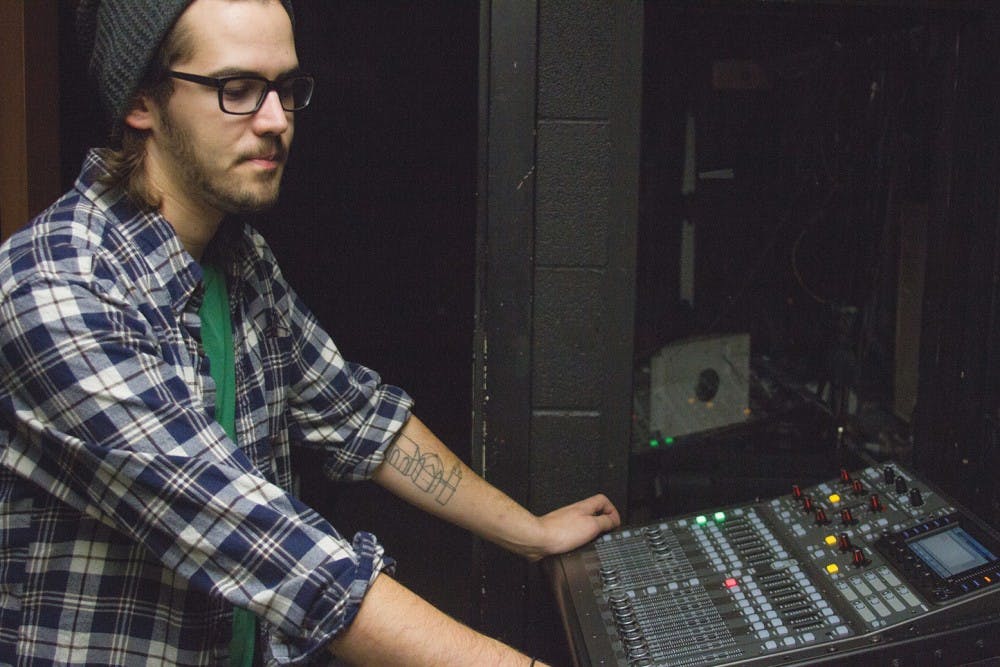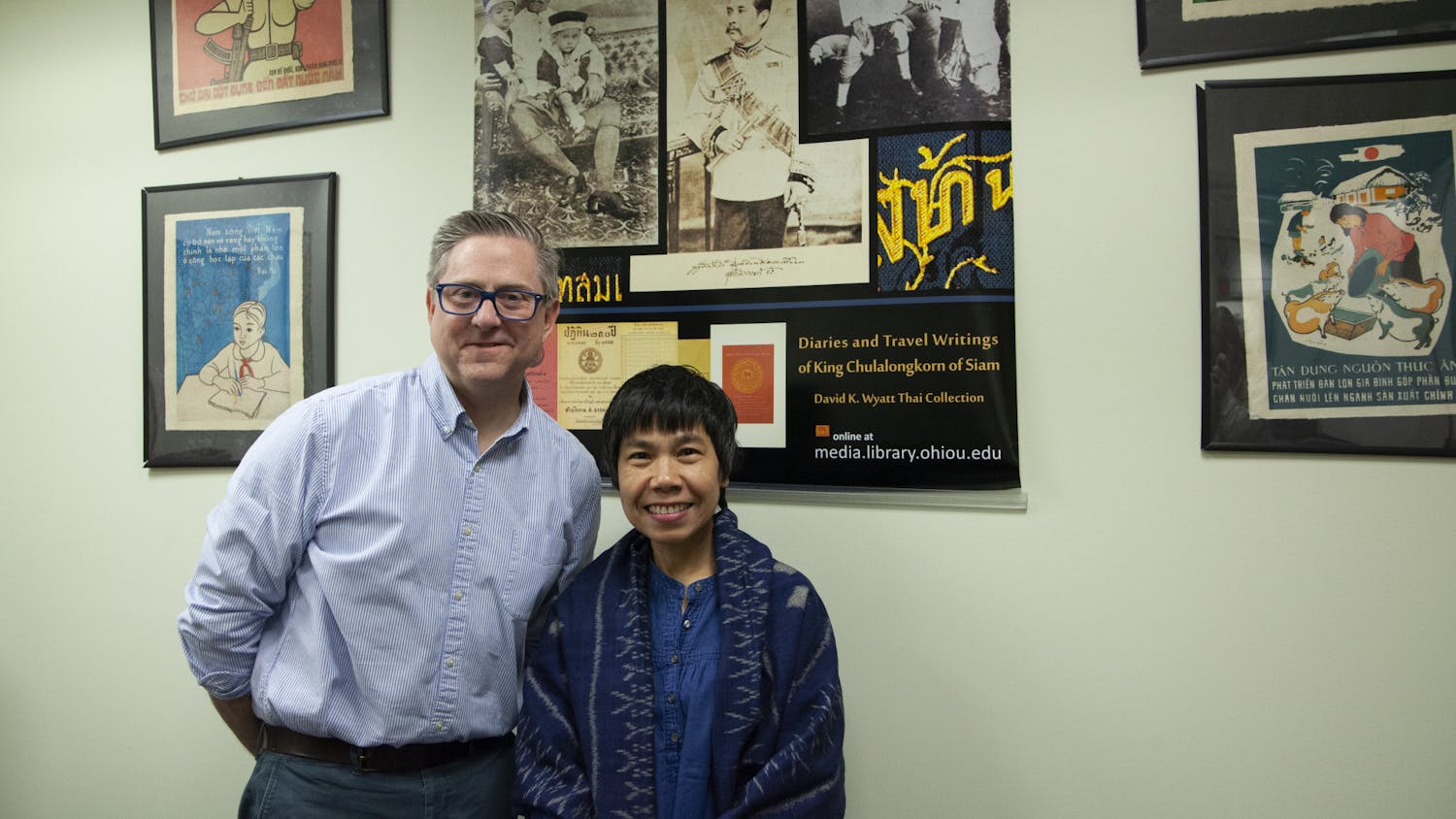The Division of Theater has brand new sound, lighting and scenic equipment that is already being utilized.
It’s the Friday before the Division of Theater’s first mainstage production, bobrauschenbergamerica, opens and a 500-pound LED equipment package has just arrived.
And it is needed for the play’s technical rehearsals that night.
“None of us had ever used them before,” said Jeremiah Stuart, a second-year graduate student studying lighting. “We had to learn the equipment and get it circuited and wired in time so the lighting designer could use it all that night … We did it in like six hours.”
Though they did set everything up, it didn’t all go off without a hitch. Curtain was held on the first night of performances so sound and lighting problems could be fixed.
The students worked with designers and directors to assemble the complex lighting system, a process that incorporates a considerable amount of engineering elements. Typically for one mainstage show, there are 250 to 350 lighting fixtures.
This LED, or light-emitting diode, package was a part of a larger new sound, lighting and scenic equipment purchase the Division of Theater made this year after leaving some of its older equipment at the Monomoy Theatre in Chatham, Massachusetts.
Lowell Jacobs, master electrician and master audio, said when Ohio University ended its affiliation with the summer stock theater in May, it was decided the division would leave this equipment at Monomoy so it could continue its normal operation for the summer of 2015.
OU and Monomoy shared the equipment, which was purchased in 1998 for more than $100,000 in a joint effort between OU and the Friends of Monomoy Theatre, a Chatham group that supports the theater.
Michael Lincoln, artistic director of the division and head of the lighting design program, said records from the era of the purchase are no longer required to be kept, but he said the Friends of Monomoy Theatre paid the majority of the amount.
This donation meant the Division of Theater would have to replace the equipment. Lincoln said Dean of the College of Fine Arts Margaret Kennedy-Dygas applied to the Office of the Executive Vice President and Provost for one-time funding of $70,000 for the equipment replacement.
The final cost was $71,370.88. Lincoln said Kennedy-Dygas committed College of Fine Arts funds to cover the amount in excess of the Provost’s funding.
Jacobs said though the numbers are different, “we got more” because the new technology costs a fraction of the old equipment.
Most important of all, Jacobs said, is that the new equipment is much more energy efficient. For instance, a six-foot rack of equipment is now condensed into just one soundboard, allowing designs to be achieved more quickly. Incandescent lighting emits light after being heated while LED lighting emits light in response to an electrical current.
“The old technology drew 6.25 amps and the new stuff is under 1 amp. The old one would run at 500 or 600 F, and the new is just above room temperature,” Jacobs said.
With the new lighting, Stuart said what used to take 10 lights now only takes one and the range of colors is much greater and vivid.
The new equipment also allows for more sound sources, such as having a speaker behind a window or a door to create those ordinary sounds to create a true virtual reality. Before, Jacobs said the old equipment could be “coerced” to have eight outputs, but with the new technology, there can be 24.
“We’re creating an enhanced experience, immersive in nature, pulling the audience into the story that we are presenting,” Jacobs said.
A key part in the new equipment purchase was iPads, which Lincoln said are the preferred equipment for remote focus units, which control the light board. He said iPads might seem like a strange equipment request but they are about one-third the cost of a RFU from the manufacturer.
“During tech, the operator can design from the audience perspective on an iPad versus the sound booth where the audience will never be,” said Nathan Davis, a first-year graduate student studying sound and projections design. “This technology spreads and improves the design process tenfold.”
Jacobs said that overall the new equipment allows OU to research and thus help further the production design field.
“It’s an opportunity to play with technology compared to that of Cirque du Soleil,” Jacobs said. “State universities aren’t in that bracket. Now we can play with the big kids.”
@buzzlightmeryl
mg986611@ohio.edu






